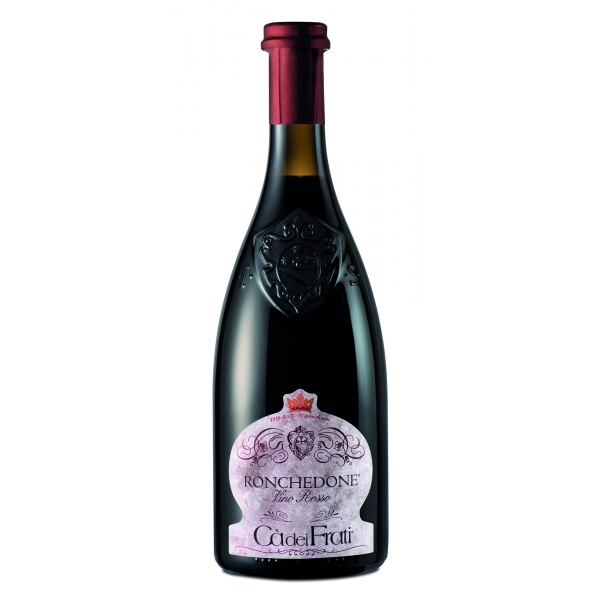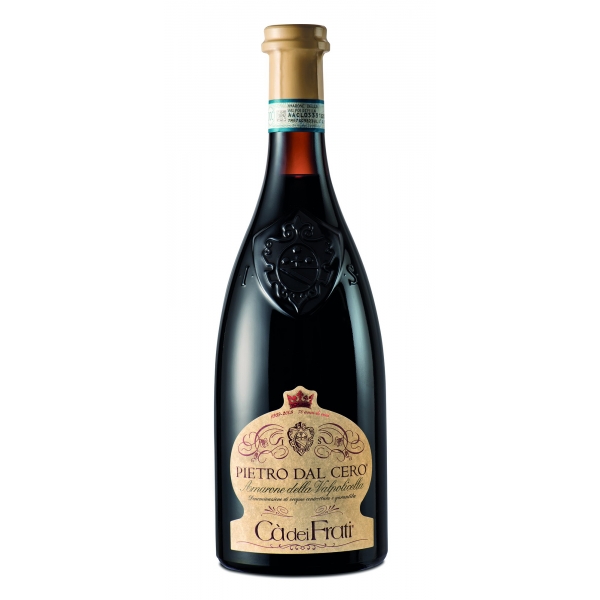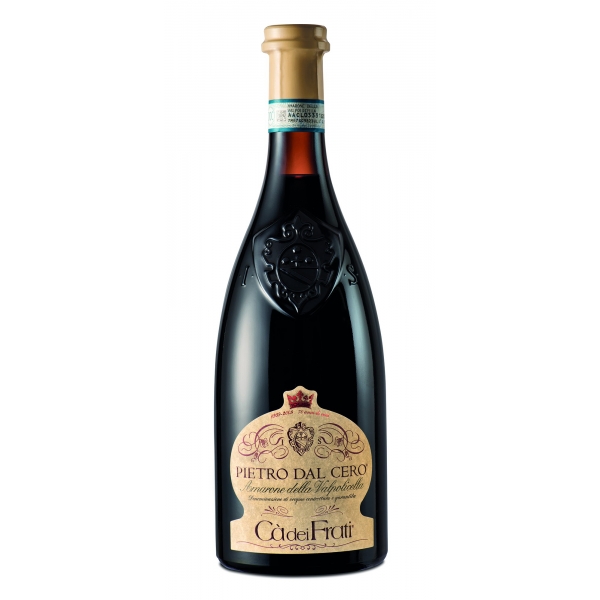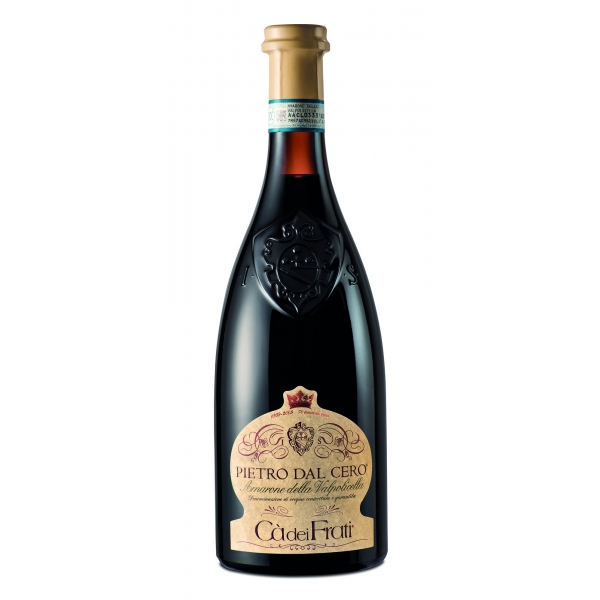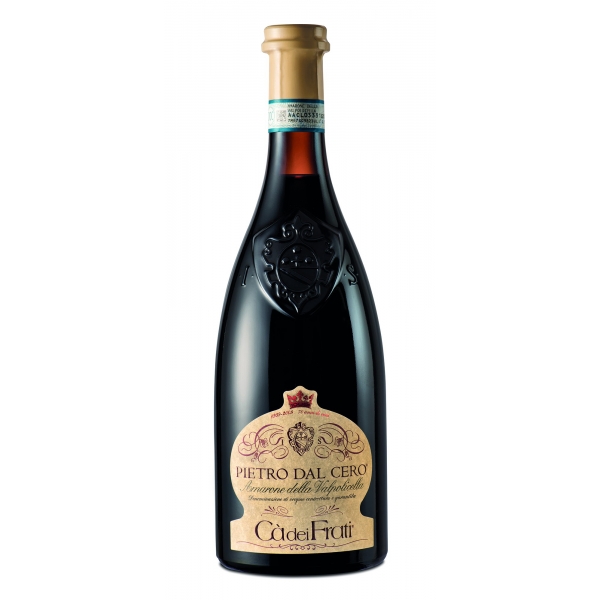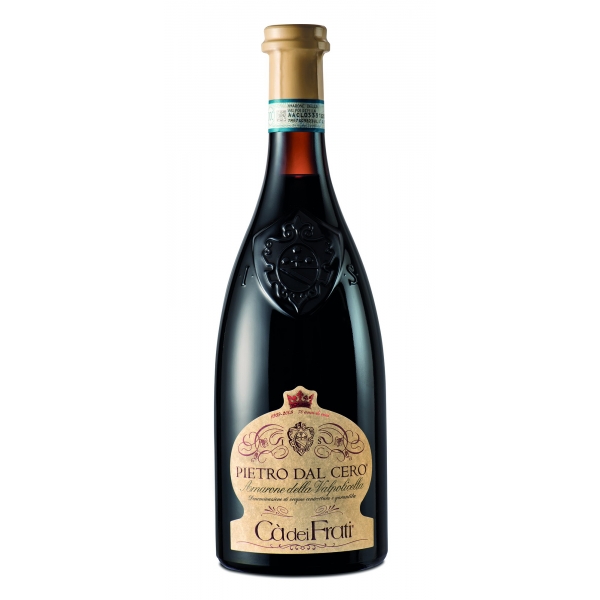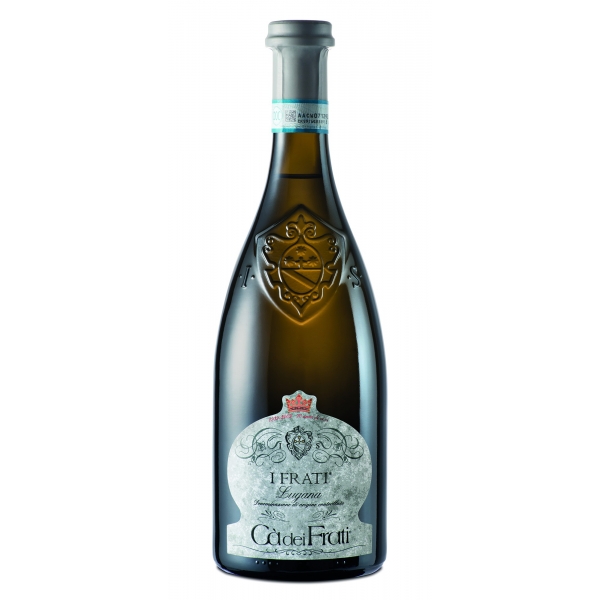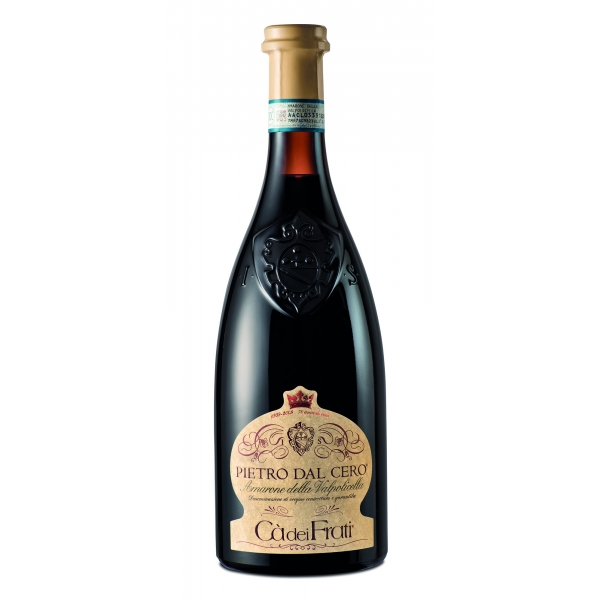No products
Categories
Extra
Ca' dei Frati
Azienda Agricola since 1939

"Drink your Lugana young, very young, and enjoy its freshness. Drink it after two or three years and enjoy its completeness. The Luganas are rare among wines in that they have an extraordinary capacity for getting themselves recognised. Taste a Lugana and, if you are a good taster, you cannot forget it. A great painter can be recognised, as can a great musician: every time, when a new work is produced, it is recognised as his, it’s a way of presentation that arises at that moment”. - L.Veronelli
Since 1939 - Once Upon a Time…
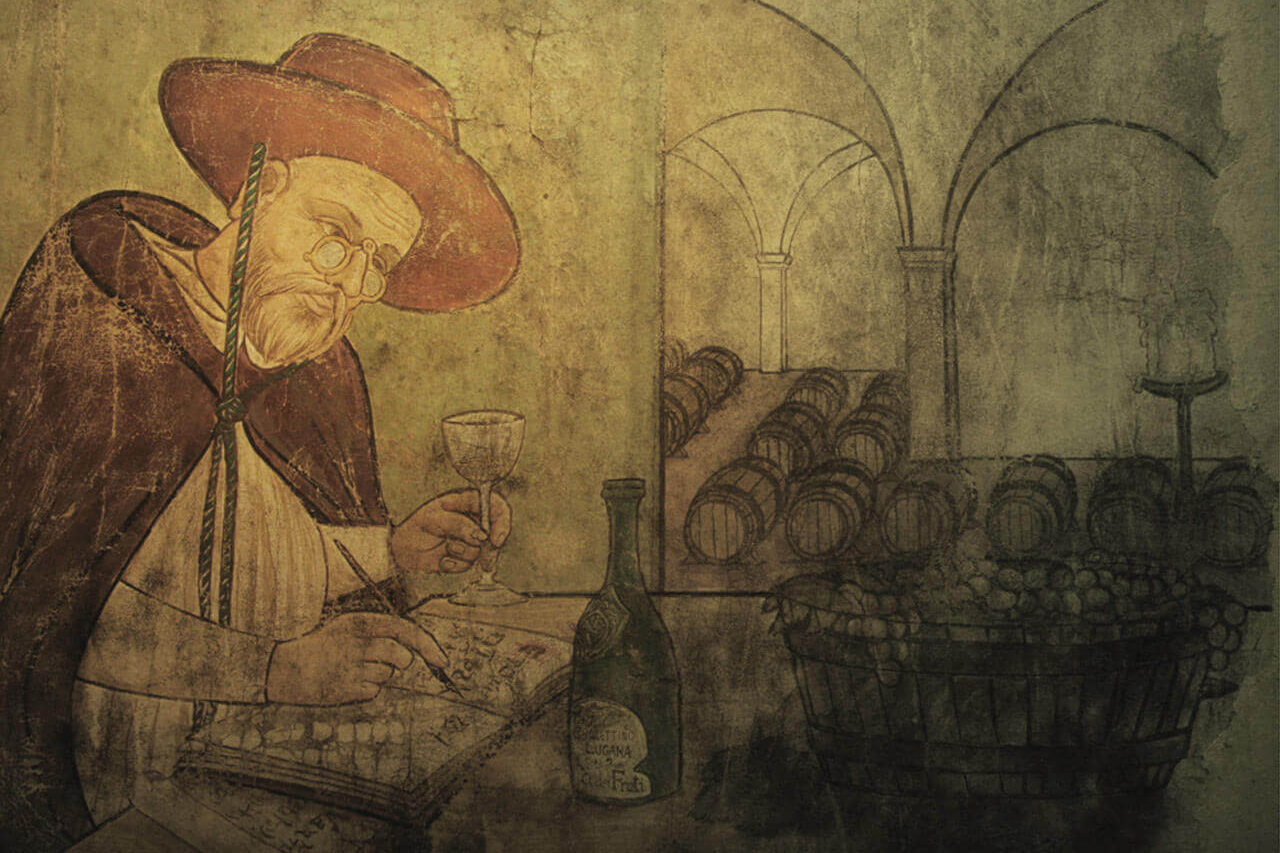
The Ca’ dei Frati company has been renowned since 1782, as confirmed by a document that refers to "a house with a cellar located in Lugana in the Sermion district known as the place of the Friars”. In 1939, Felice Dal Cero, son of Domenico, formerly a wine grower in Montecchia di Crosara near Verona, moved to that very house in Lugana di Sirmione, immediately realising the area’s potential for vine cultivation. After thirty years working in the vineyard and the cellar, his son Pietro took part in the creation of the DOC in 1969, bottling his first wine with the label Lugana Casa dei Frati, later named Ca’ dei Frati. In 2012, Pietro Dal Cero passed away, leaving the cultural legacy to his wife Santa Rosa and children Igino, Gian Franco and Anna Maria, who run the company with the same passion and determination.
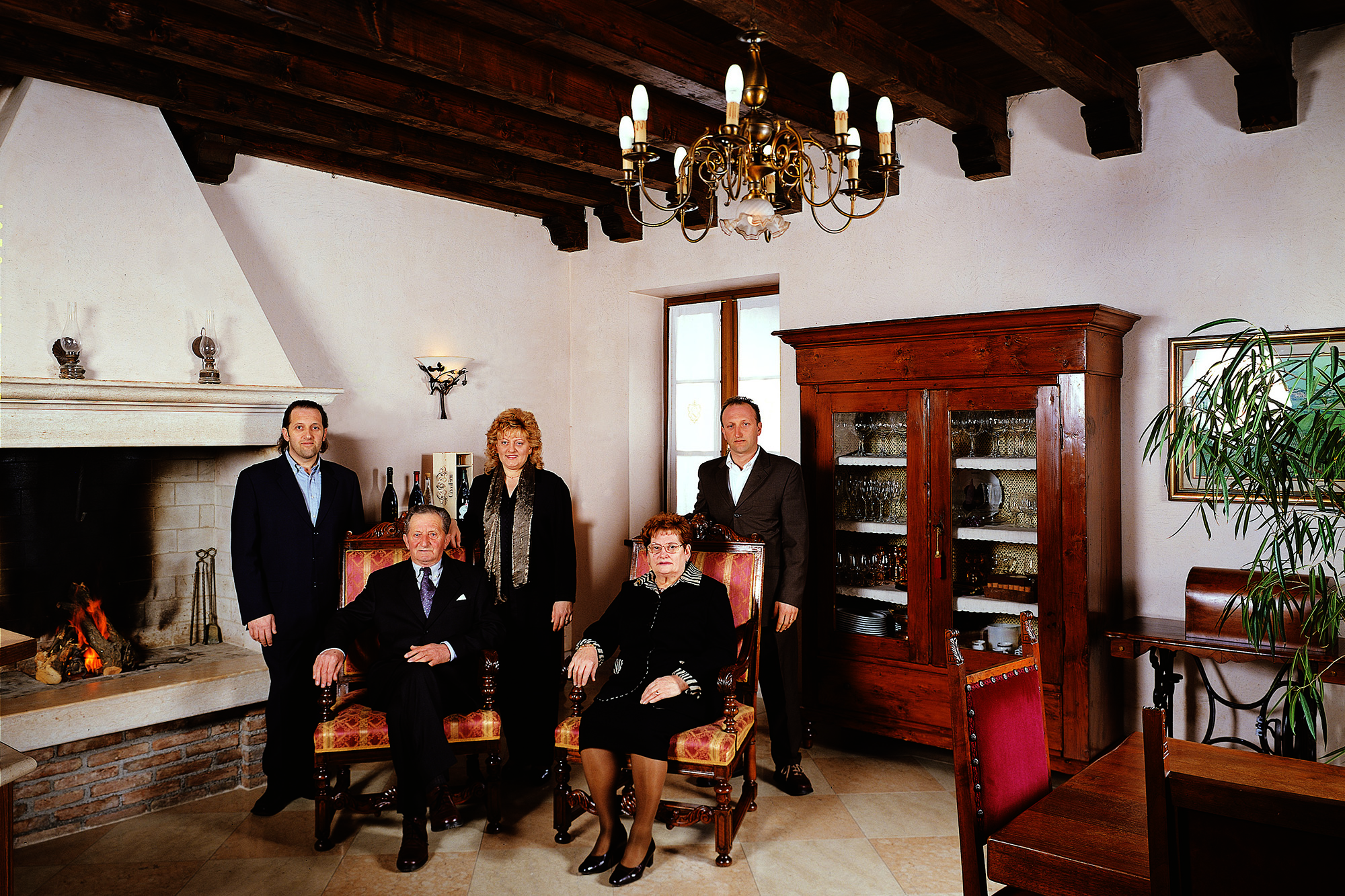
The most recent acquisition of the Luxinum vineyard in Valpolicella is therefore a return to the origins, where everything began. Reciprocal respect, family bonds, defined roles and the link to our territory on the shores of Lake Garda are the strongpoints of our company. ca dei Frati cherishes the past and looks to the future, investing in research and the development of the legacy of 80 years' winemaking experience.
Tradition and History
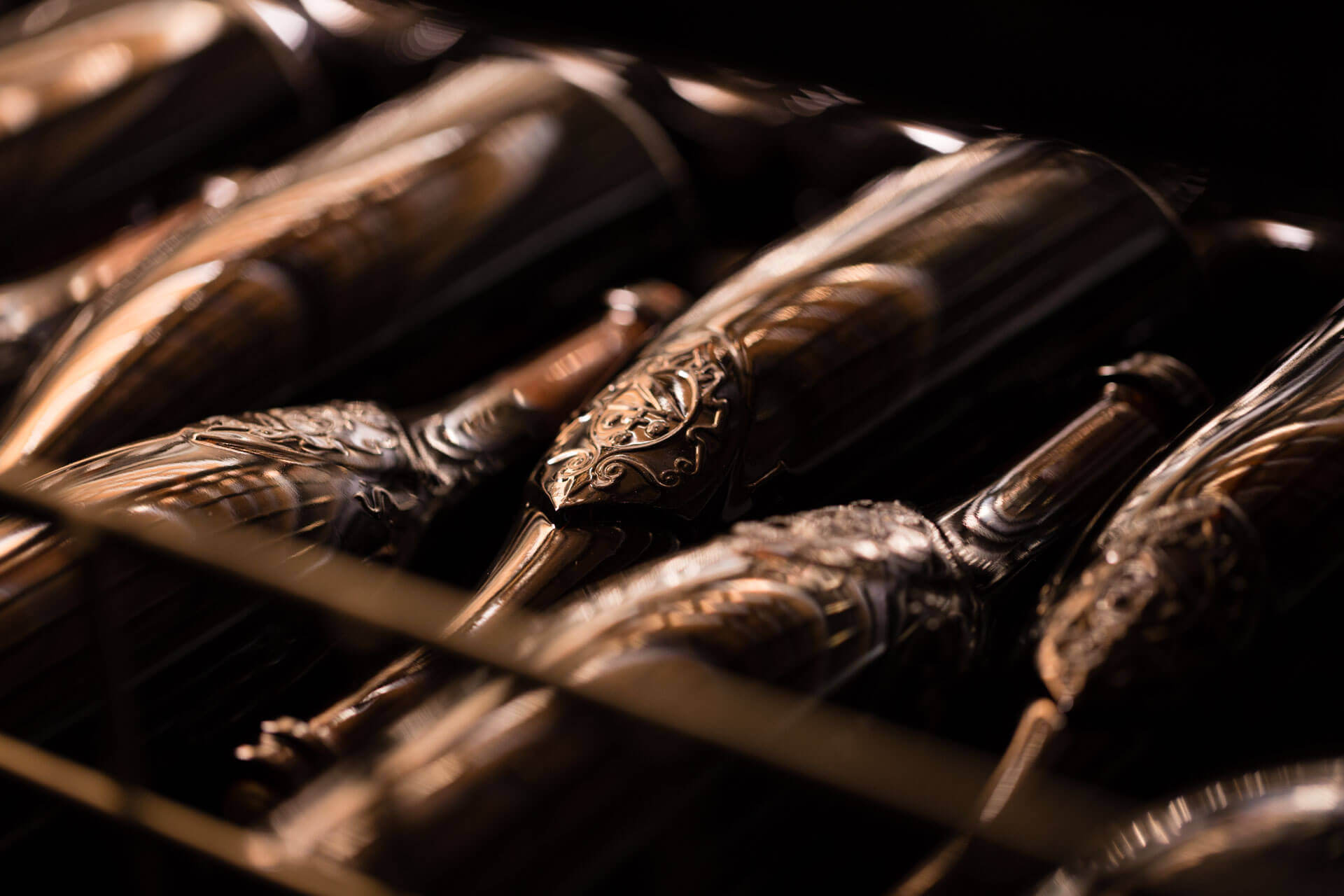
The most ancient document reporting the appreciation of the quality of Lugana wines can be found in the first edition of "De Naturali Vinorum Historia" by Andrea Bacci, a doctor and researcher trusted by Pope Sixtus V.
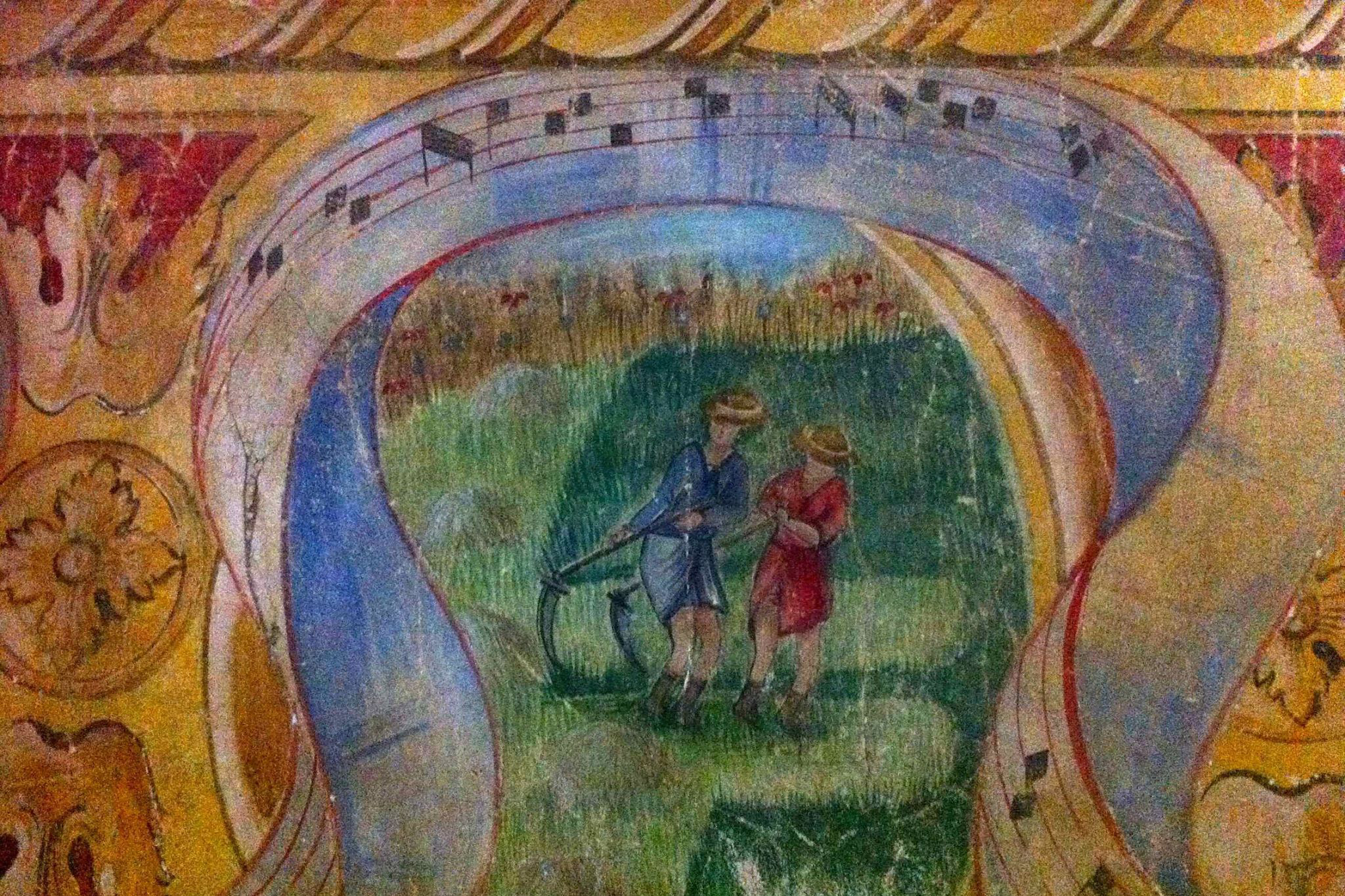
Who wrote that "between Peschiera and Desenzano del Garda, they produce exquisite Trebulani and a golden, sparkling Candia wine"..
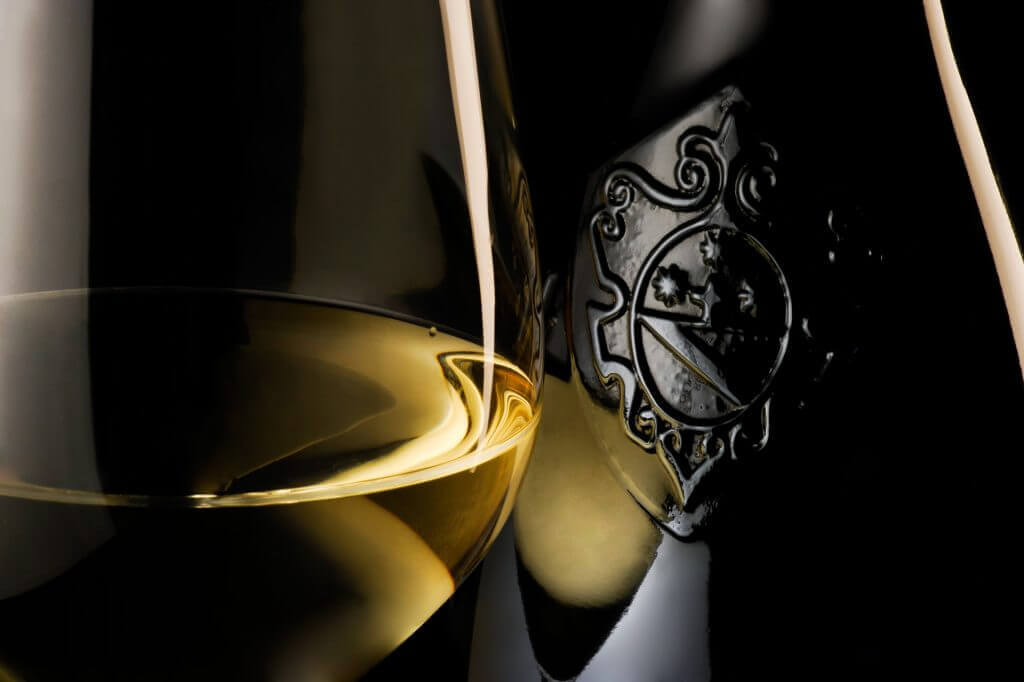
The volume then relates that there was an offshoot of the Carmelite convent of devotees to Santa Maria del Carmine in the centre of this zone on the shores of Lake Garda, where the nuns engaged in the cultivation of vines to meet the needs of the Holy Communion and their community.
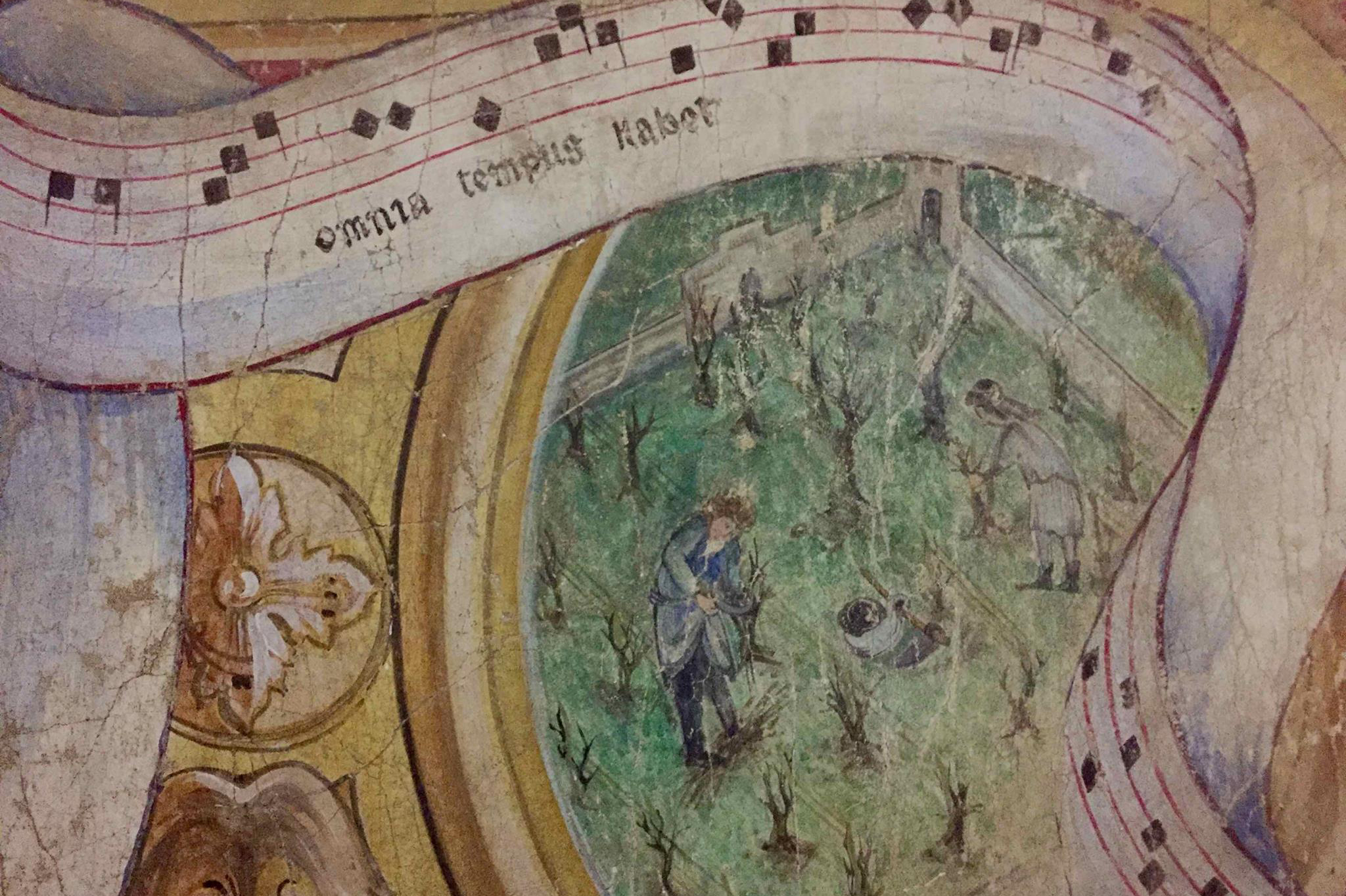
In a later document of 1782, a property census, the first description appears of a house with "several parcels of land known as the place of the friars", the origin of the modern-day ca dei Frati. All that remains of the old building today is the ancient and unique sign of the Carmelites in the door-jamb of the old entrance to the cellar. It is now the official coat-of-arms of the Ca dei Frati.
The Three Elements - Location, Climate and Soil

An amphitheatre of morainic hills was formed in the southern part of Lake Garda by the retreat of glaciers: a land rich in calcareous soil, containing stony materials and mineral salts in the lower strata with a stratum of calcareous clay and silt on the surface. This composition enables elegant vines to be obtained with longevity and great mineral content.
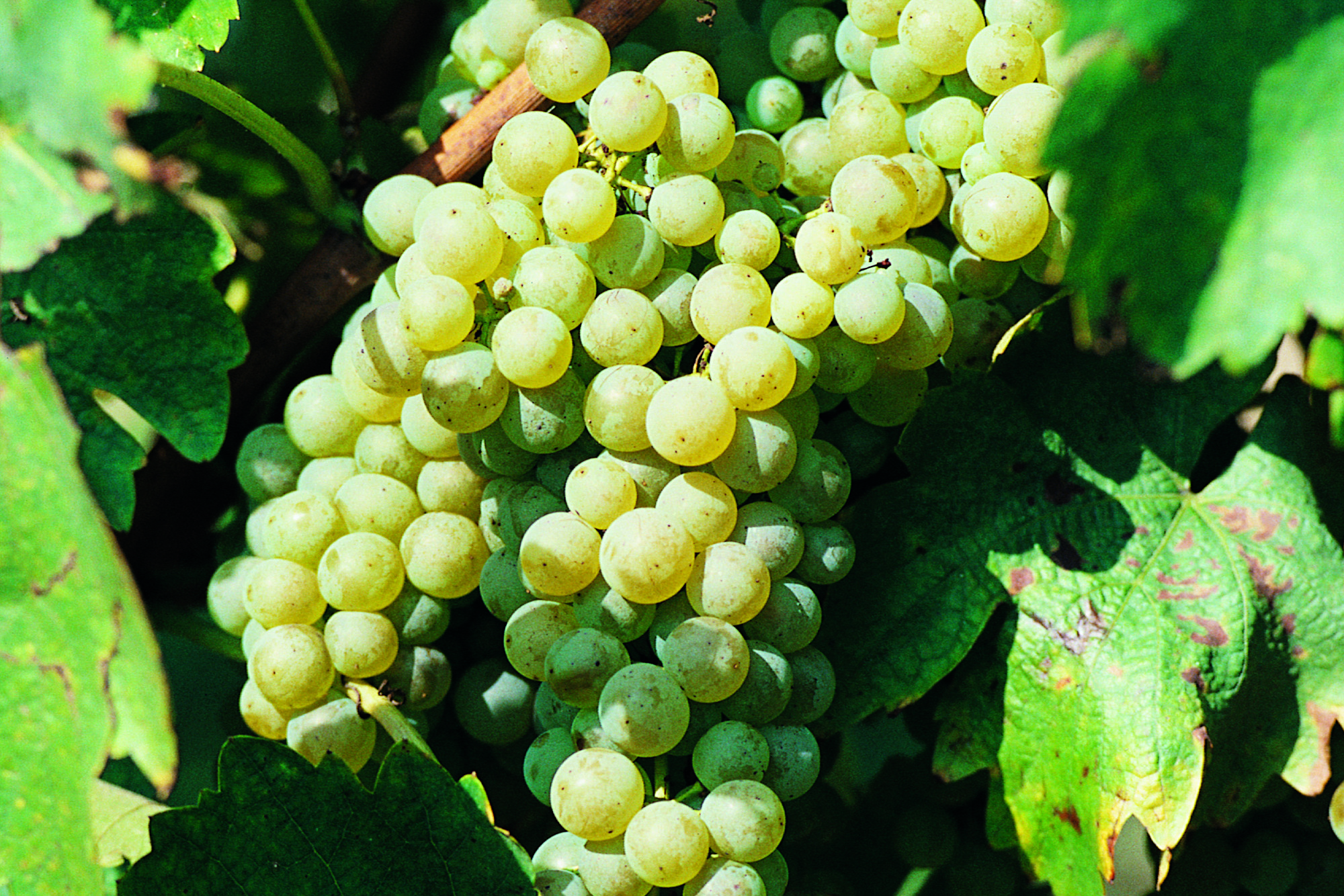
Once, the entire area was covered with wo-ods and marshes: this was the Silva Lucana, filled with stags, fallow deer and wild boar. Today, thanks to the mild climate, the shores have a completely different appearance. In addition to vines, olive trees, lemons, cedars, almond trees, agaves and palms all proliferate.
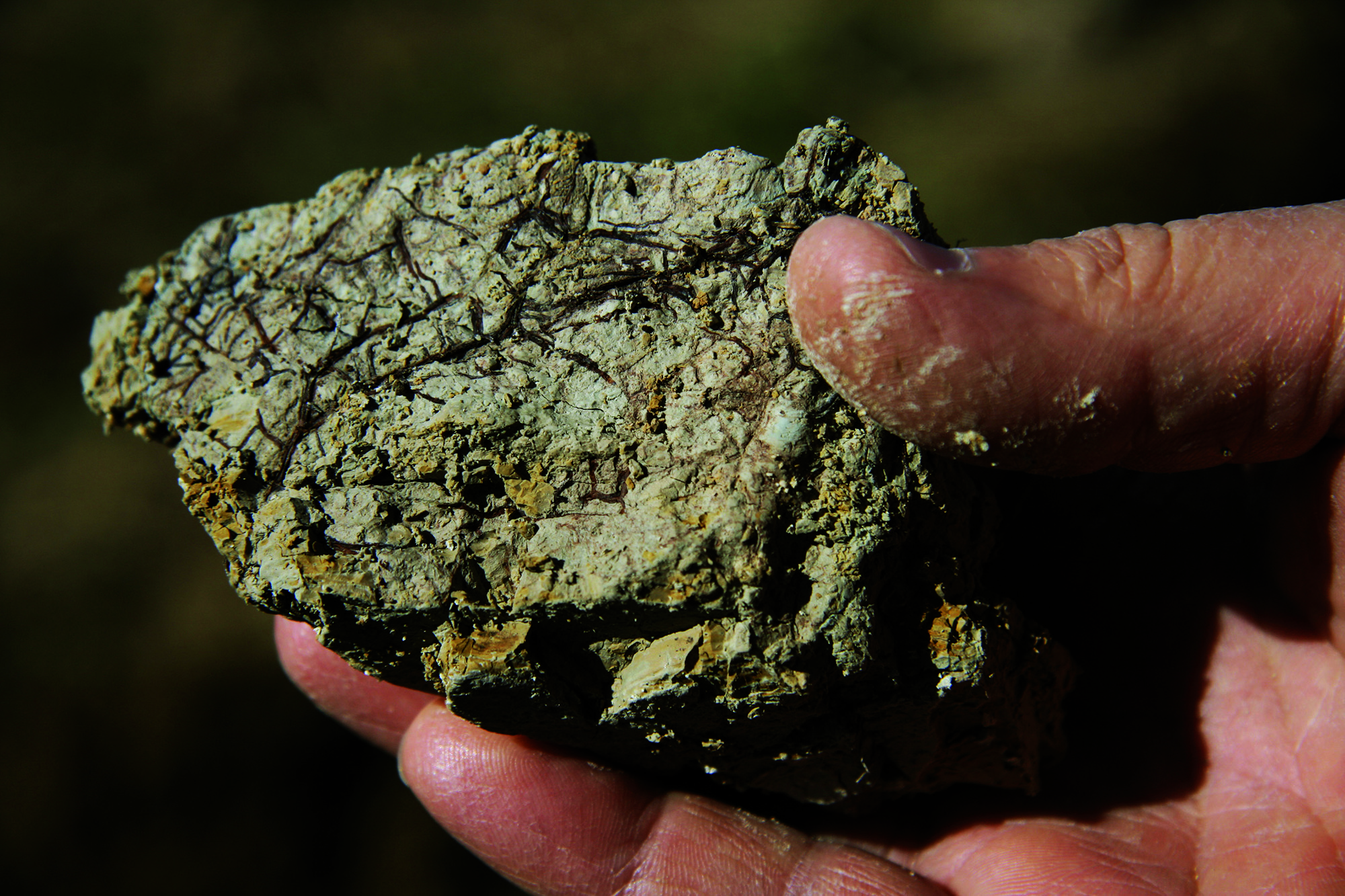
The mildness of the climate of Lake Garda is one of the factors that contribute to the production of these exclusive vines in a remote corner of the Mediterranean lying between the Alpine foothills of Lombardy and Veneto. In addition, the wind plays a crucial role.
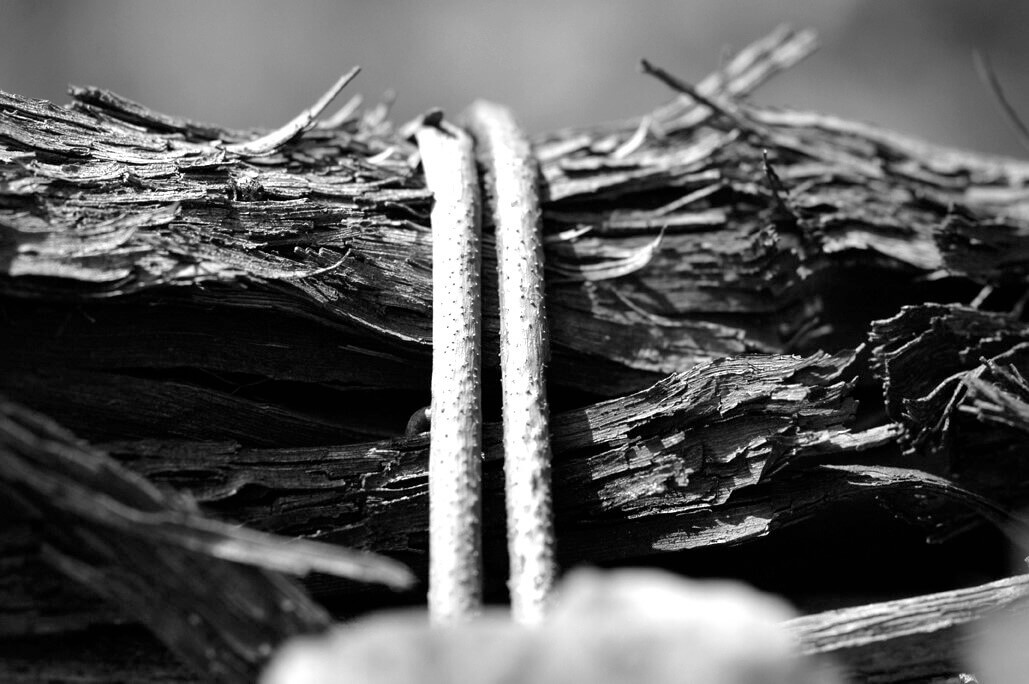
The Pellr that blows from Riva del Garda from north to south generates temperature ranges that enable grapes to be grown with great varietal expression. The great mass of water of the lake acts like a giant thermostat, creating a perfect microclimate even though the land is mostly flat. This is where we cultivate our vines with care and dedication.
Within The Walls of The Monastery - Time, Our Best Ally
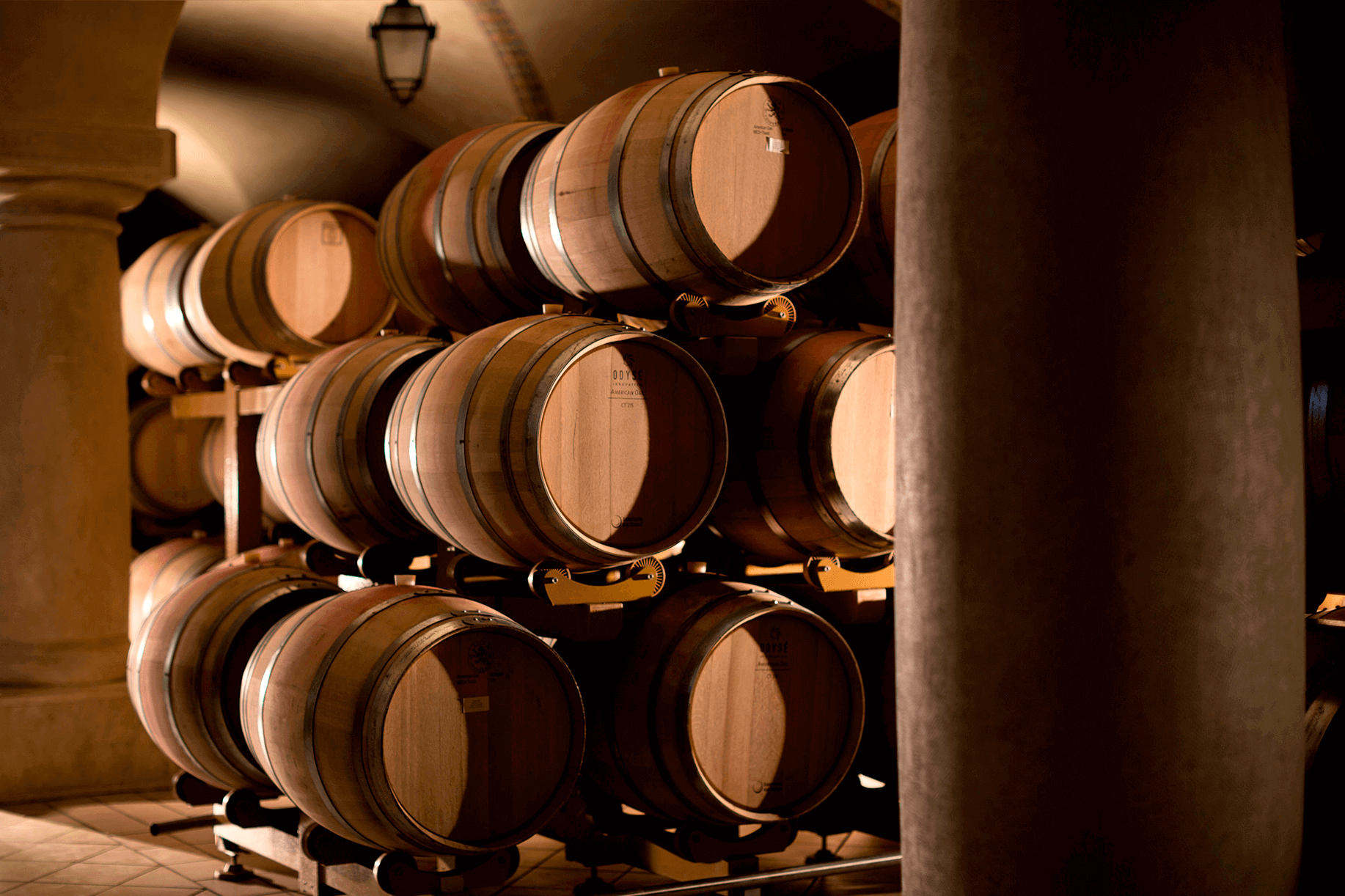
The grapes of every vineyard are vinified separately in order to gain a clearer vision of the expressions of our "terroir".
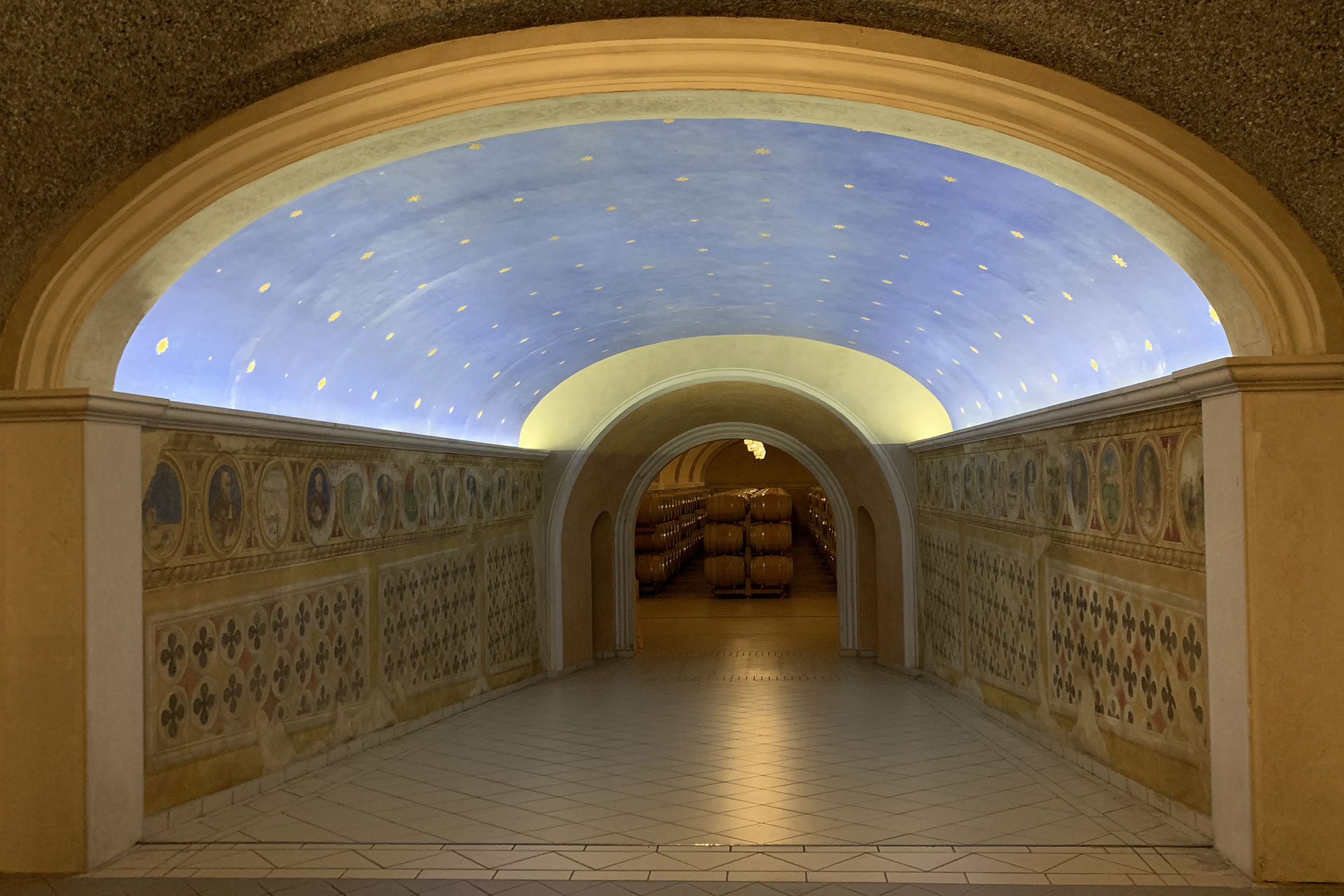
The processes take place with the utmost respect for the raw material through an innovative technique refined over the years that enables us to obtain full-bodied wines with great longevity.
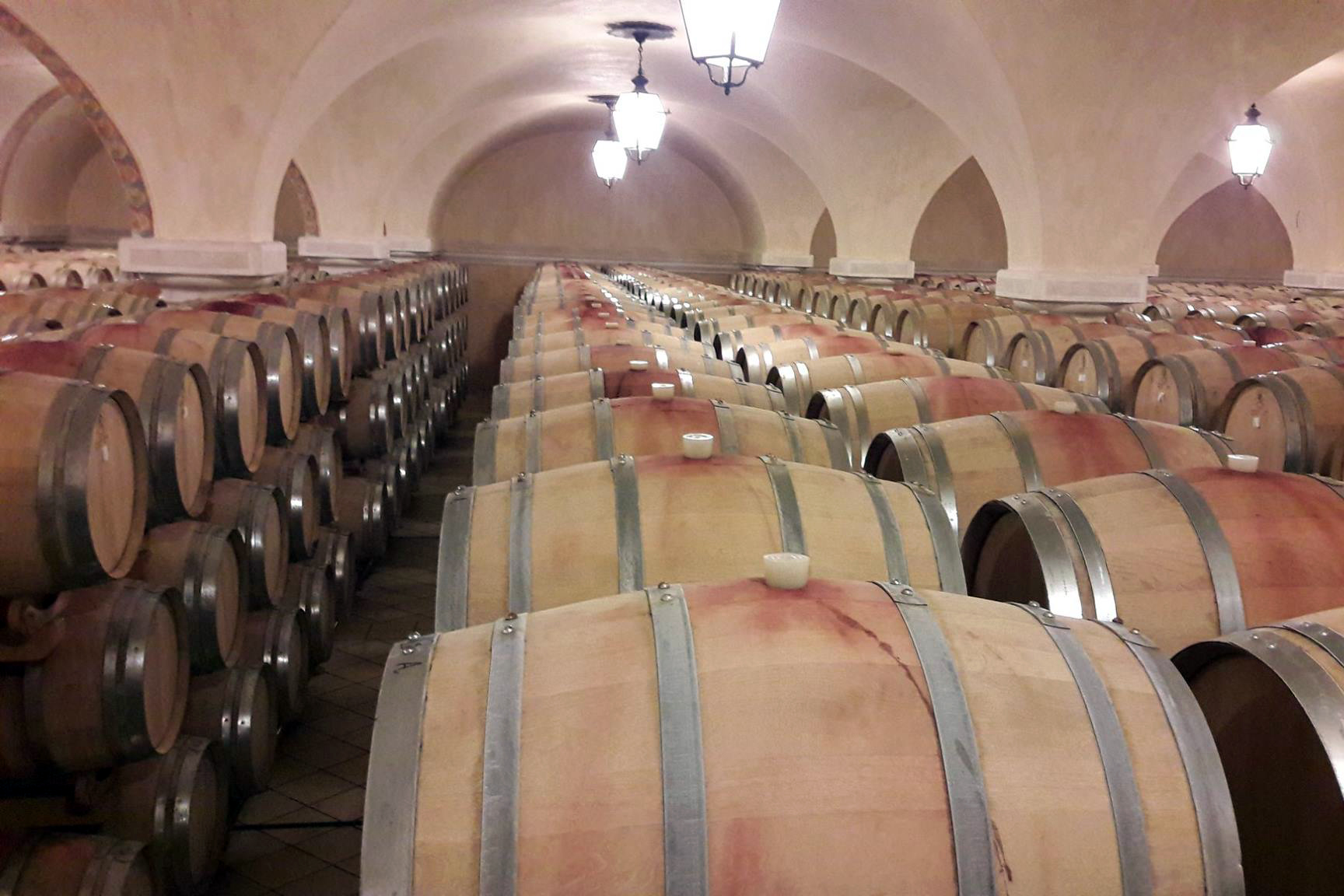
The bond and the continuous collaboration with our friend Gino Veronelli has helped us to create and plan our wines over time.
From The Vineyards on Lake Garda - The Wines
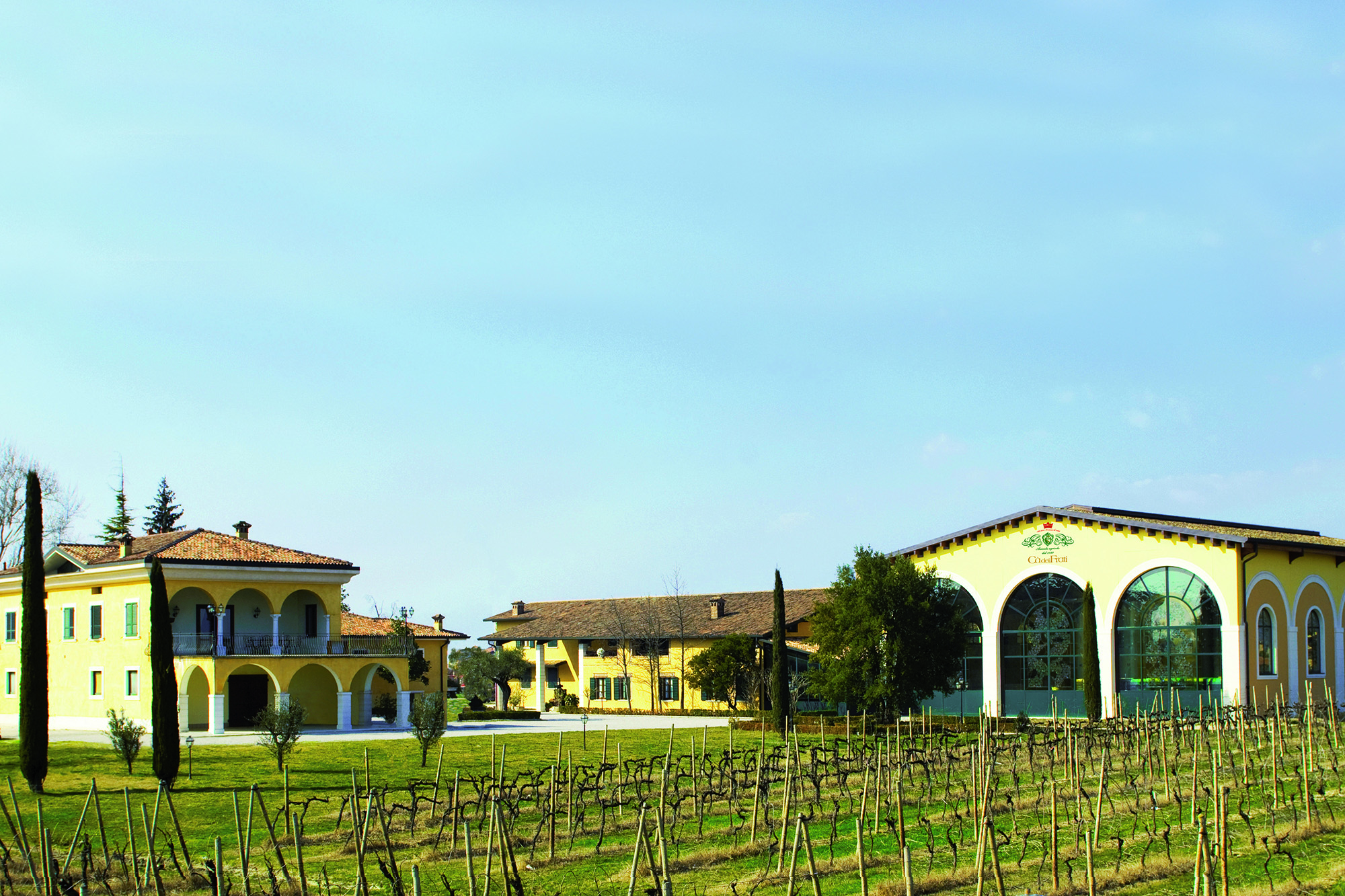
Our wines are grown through careful observation of the territory and the behaviour of the vines, just as it has always been done by all four generations of wine producers. We regard the awakening of the plant's vegetative cycle as the beginning of the process of producing our wi-nes. Indeed, our philosophy is to use avant-garde techniques to obtain parietal and mineral wines that are the most typical expression of the territory with its unique soil and climate.
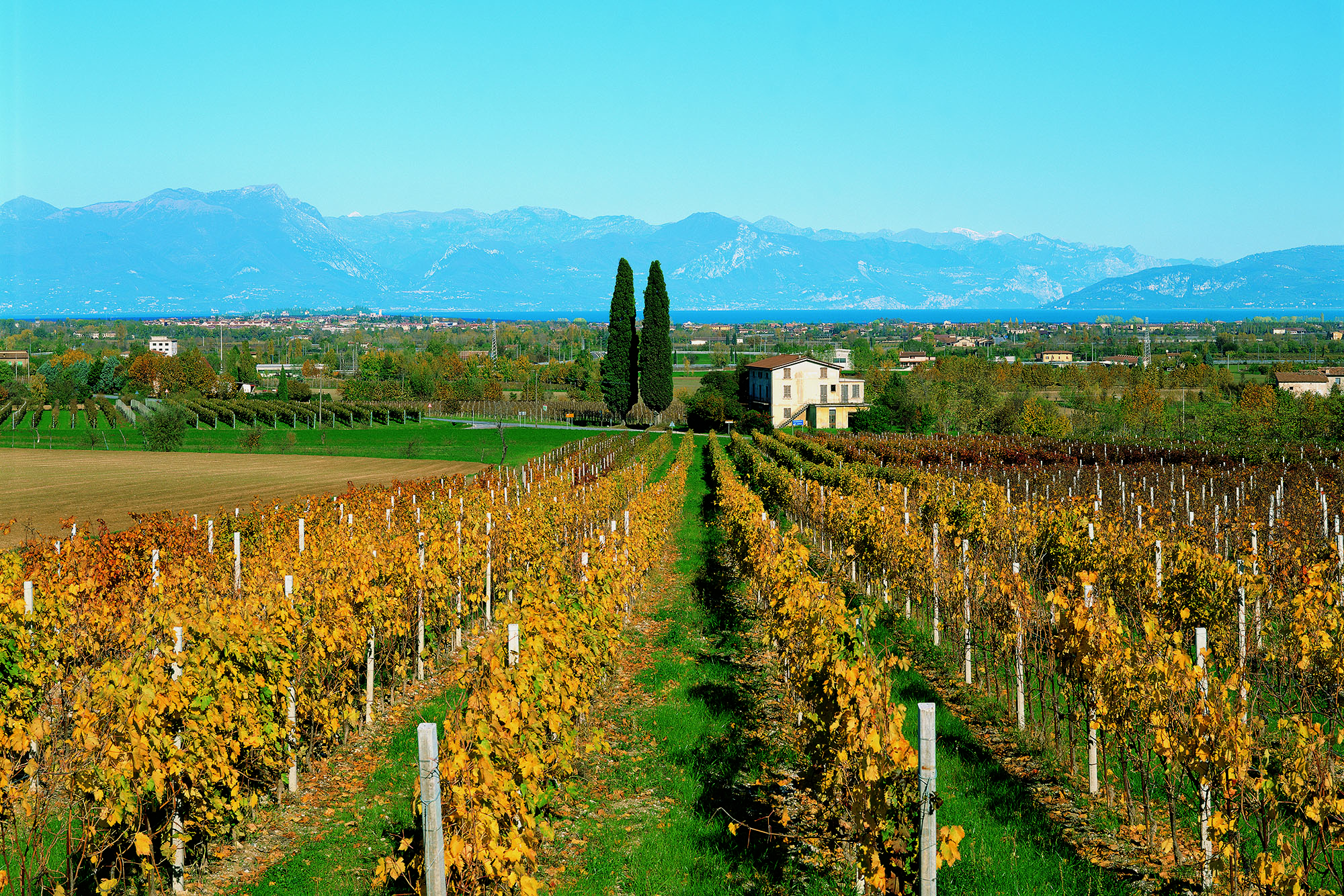
The grapes of every vineyard are vinified separately in order to have the clearest possible vision of the expressions of our "terroir". The processes are also conducted with the utmost respect for the raw materials through an innovative technique refined over the years that enables us to obtain wines with integrity and longevity.
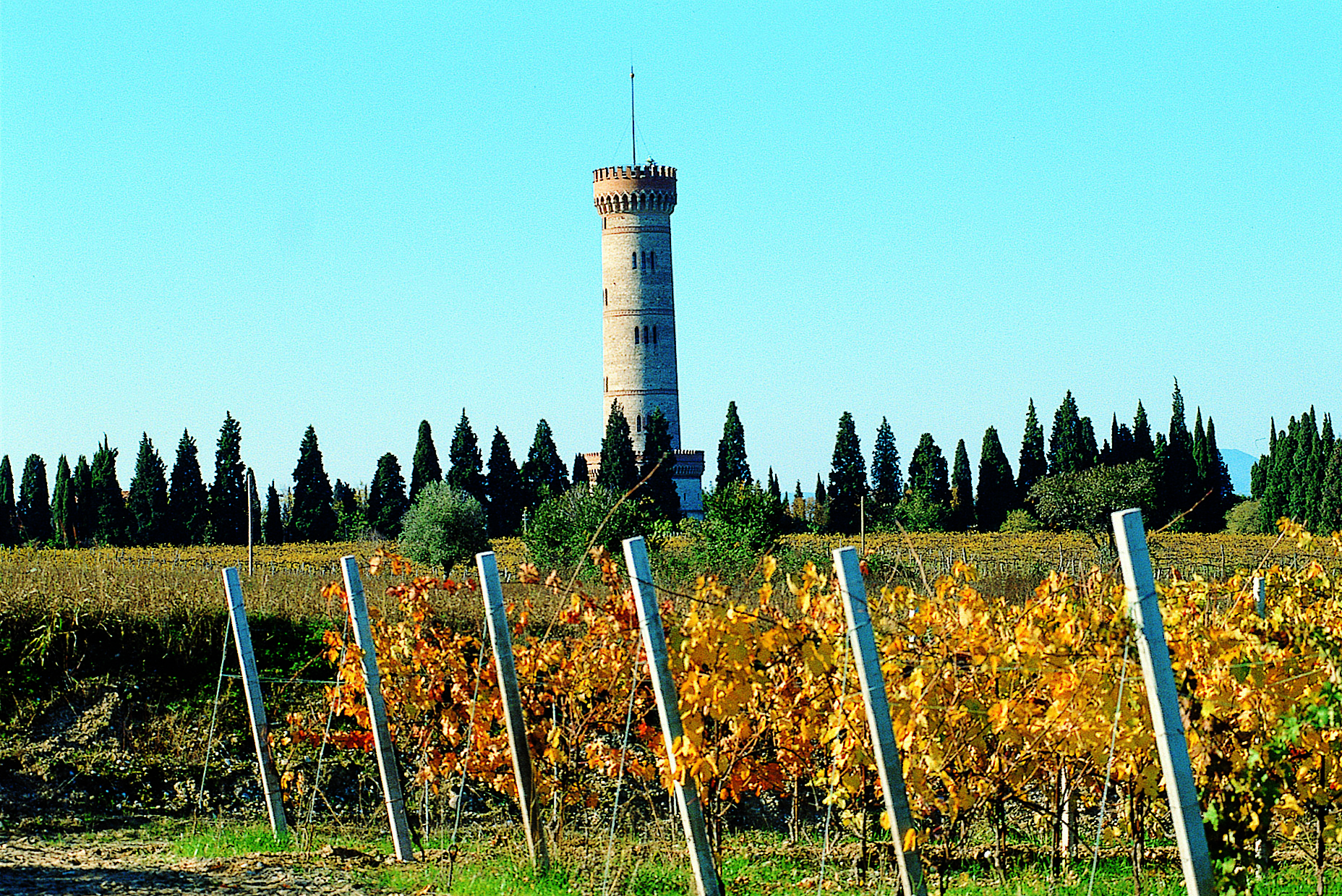
The bond and continuous consultation with our friend Gino Veronelli have helped to plan our wine production for the future. We run our company in the simplest and most natural way possible, as if it all happens in accordance with a predetermined path which we follow in order to obtain wines that encapsulate all our passion and personality.
Dedicated to Our Guests - Our Establishments on Lake Garda

The Ca’ dei Frati experience can be enjoyed not only in our cellar but along the shore of Lake Garda at our catering facilities, where our wines can be tasted at the tables of our restaurants and premises.

At the Fenice and at Aquila d'Oro Hotel Restaurant, you will have the opportunity to taste all the wines of the winery Ca 'dei Frati, by the glass or in the bottle to be consumed at the table overlooking the lake.
Our Lands
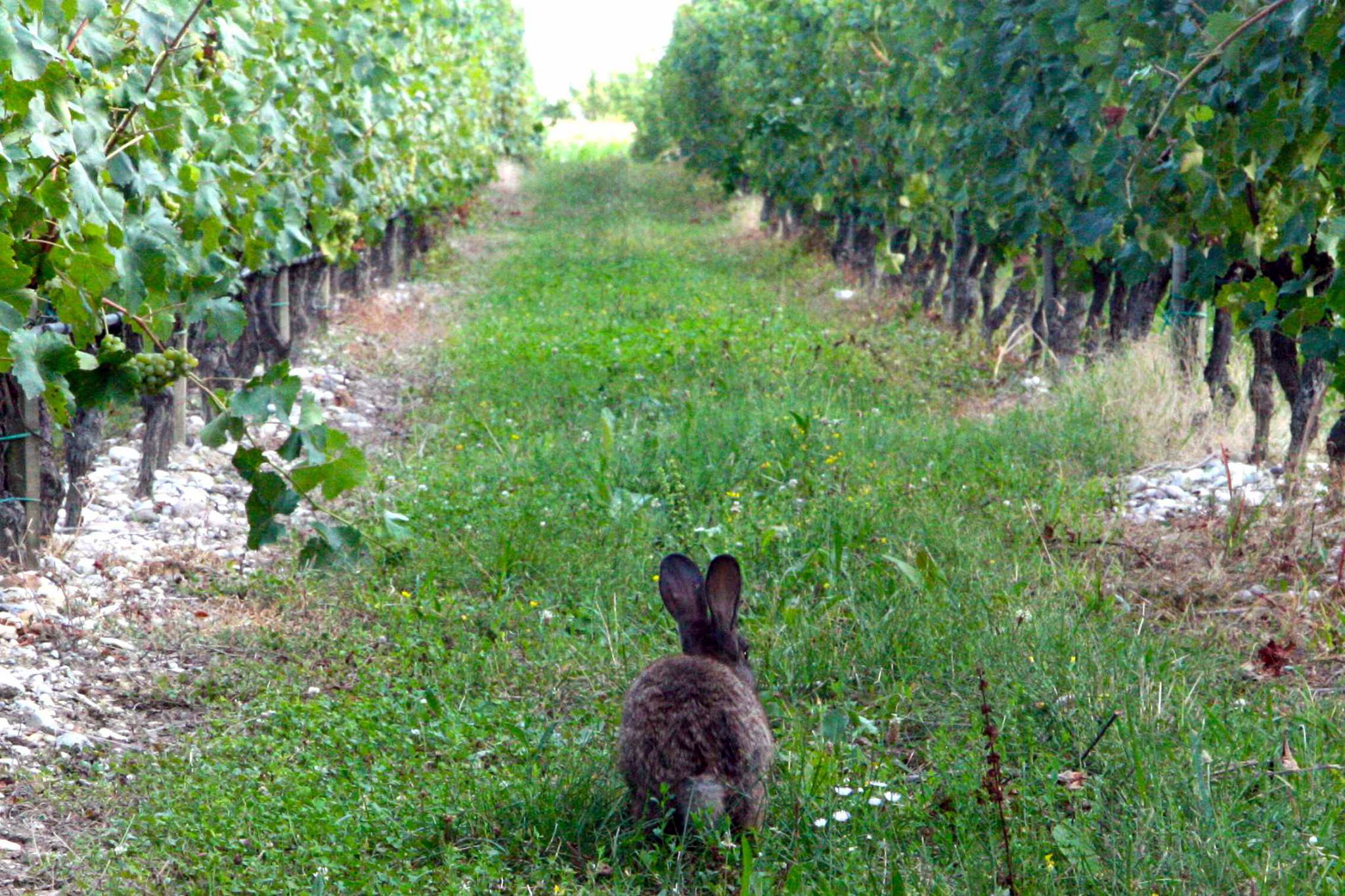
Our wines come from owned vineyards that we cultivate, above all, in the Lugana di Sirmione district and around the tower of San Martino della Battaglia.
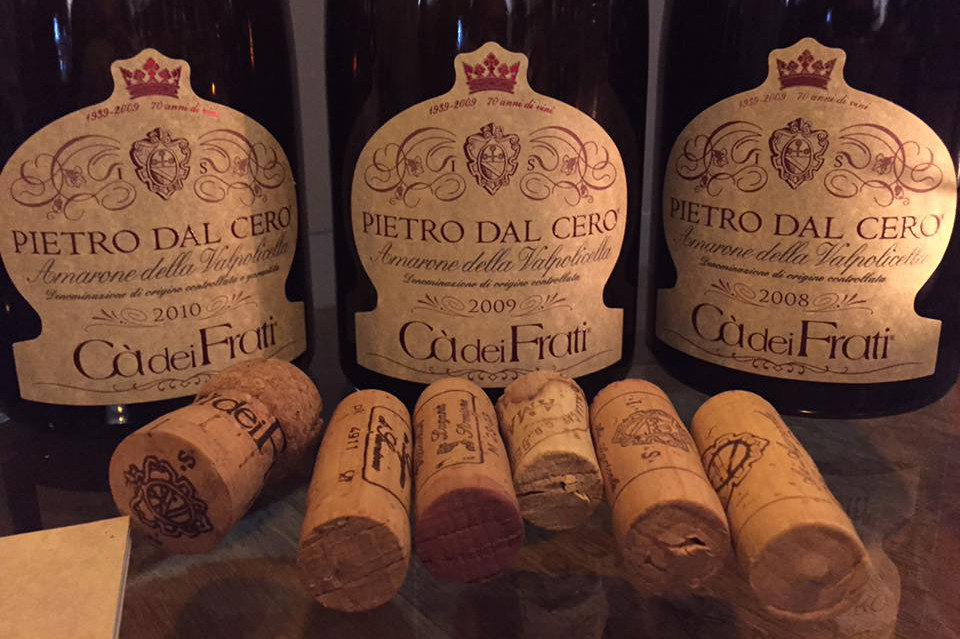
At the start of the new millennium, another 11 hectares were added to the estate in Valpolicella on the Pian di Castagnè in the Luxinum vineyard, where our Amarone Pietro Dal Cero is created.
Products Ca' dei Frati
Ca' dei Frati
Azienda Agricola since 1939

"Drink your Lugana young, very young, and enjoy its freshness. Drink it after two or three years and enjoy its completeness. The Luganas are rare among wines in that they have an extraordinary capacity for getting themselves recognised. Taste a Lugana and, if you are a good taster, you cannot forget it. A great painter can be recognised, as can a great musician: every time, when a new work is produced, it is recognised as his, it’s a way of presentation that arises at that moment”. - L.Veronelli
Since 1939 - Once Upon a Time…

The Ca’ dei Frati company has been renowned since 1782, as confirmed by a document that refers to "a house with a cellar located in Lugana in the Sermion district known as the place of the Friars”. In 1939, Felice Dal Cero, son of Domenico, formerly a wine grower in Montecchia di Crosara near Verona, moved to that very house in Lugana di Sirmione, immediately realising the area’s potential for vine cultivation. After thirty years working in the vineyard and the cellar, his son Pietro took part in the creation of the DOC in 1969, bottling his first wine with the label Lugana Casa dei Frati, later named Ca’ dei Frati. In 2012, Pietro Dal Cero passed away, leaving the cultural legacy to his wife Santa Rosa and children Igino, Gian Franco and Anna Maria, who run the company with the same passion and determination.

The most recent acquisition of the Luxinum vineyard in Valpolicella is therefore a return to the origins, where everything began. Reciprocal respect, family bonds, defined roles and the link to our territory on the shores of Lake Garda are the strongpoints of our company. ca dei Frati cherishes the past and looks to the future, investing in research and the development of the legacy of 80 years' winemaking experience.
Tradition and History

The most ancient document reporting the appreciation of the quality of Lugana wines can be found in the first edition of "De Naturali Vinorum Historia" by Andrea Bacci, a doctor and researcher trusted by Pope Sixtus V.

Who wrote that "between Peschiera and Desenzano del Garda, they produce exquisite Trebulani and a golden, sparkling Candia wine"..

The volume then relates that there was an offshoot of the Carmelite convent of devotees to Santa Maria del Carmine in the centre of this zone on the shores of Lake Garda, where the nuns engaged in the cultivation of vines to meet the needs of the Holy Communion and their community.

In a later document of 1782, a property census, the first description appears of a house with "several parcels of land known as the place of the friars", the origin of the modern-day ca dei Frati. All that remains of the old building today is the ancient and unique sign of the Carmelites in the door-jamb of the old entrance to the cellar. It is now the official coat-of-arms of the Ca dei Frati.
The Three Elements - Location, Climate and Soil

An amphitheatre of morainic hills was formed in the southern part of Lake Garda by the retreat of glaciers: a land rich in calcareous soil, containing stony materials and mineral salts in the lower strata with a stratum of calcareous clay and silt on the surface. This composition enables elegant vines to be obtained with longevity and great mineral content.

Once, the entire area was covered with wo-ods and marshes: this was the Silva Lucana, filled with stags, fallow deer and wild boar. Today, thanks to the mild climate, the shores have a completely different appearance. In addition to vines, olive trees, lemons, cedars, almond trees, agaves and palms all proliferate.

The mildness of the climate of Lake Garda is one of the factors that contribute to the production of these exclusive vines in a remote corner of the Mediterranean lying between the Alpine foothills of Lombardy and Veneto. In addition, the wind plays a crucial role.

The Pellr that blows from Riva del Garda from north to south generates temperature ranges that enable grapes to be grown with great varietal expression. The great mass of water of the lake acts like a giant thermostat, creating a perfect microclimate even though the land is mostly flat. This is where we cultivate our vines with care and dedication.
Within The Walls of The Monastery - Time, Our Best Ally

The grapes of every vineyard are vinified separately in order to gain a clearer vision of the expressions of our "terroir".

The processes take place with the utmost respect for the raw material through an innovative technique refined over the years that enables us to obtain full-bodied wines with great longevity.

The bond and the continuous collaboration with our friend Gino Veronelli has helped us to create and plan our wines over time.
From The Vineyards on Lake Garda - The Wines

Our wines are grown through careful observation of the territory and the behaviour of the vines, just as it has always been done by all four generations of wine producers. We regard the awakening of the plant's vegetative cycle as the beginning of the process of producing our wi-nes. Indeed, our philosophy is to use avant-garde techniques to obtain parietal and mineral wines that are the most typical expression of the territory with its unique soil and climate.

The grapes of every vineyard are vinified separately in order to have the clearest possible vision of the expressions of our "terroir". The processes are also conducted with the utmost respect for the raw materials through an innovative technique refined over the years that enables us to obtain wines with integrity and longevity.

The bond and continuous consultation with our friend Gino Veronelli have helped to plan our wine production for the future. We run our company in the simplest and most natural way possible, as if it all happens in accordance with a predetermined path which we follow in order to obtain wines that encapsulate all our passion and personality.
Dedicated to Our Guests - Our Establishments on Lake Garda

The Ca’ dei Frati experience can be enjoyed not only in our cellar but along the shore of Lake Garda at our catering facilities, where our wines can be tasted at the tables of our restaurants and premises.

At the Fenice and at Aquila d'Oro Hotel Restaurant, you will have the opportunity to taste all the wines of the winery Ca 'dei Frati, by the glass or in the bottle to be consumed at the table overlooking the lake.
Our Lands

Our wines come from owned vineyards that we cultivate, above all, in the Lugana di Sirmione district and around the tower of San Martino della Battaglia.

At the start of the new millennium, another 11 hectares were added to the estate in Valpolicella on the Pian di Castagnè in the Luxinum vineyard, where our Amarone Pietro Dal Cero is created.
Products Ca' dei Frati
- 1
- 2
-
Ca' dei Frati - Brolettino - Lugana D.O.C. - Magnum - White Wine
This is the wine of our great native vine: the Turbiana. Fully ripe grapes are harvested around the middle of October and the highly productive land gives us a product with structure and a great capacity for ageing. All its complexity is tangible to the taste. To the nose, there are hints of ripe fruit, peaches, yellow apples, rose petals with fresh,...
27,50 € -
Ca' dei Frati - Rosé Cuvèe dei Frati Brut - Metodo Classico - Lugana D.O.C. -...
The Cuvée Rosè is another jewel in the crown of our production. The idea for a pink sparkling wine arose at table, while thinking about the potential of the grapes already used in the production of the Rosa dei Frati. The Cuvée Rosè is obtained after a period of 24 months on the lees, during which the aroma and the taste become complex. It has very fine...
36,00 € -
Ca' dei Frati - Ronchedone - Lugana D.O.C. - Magnum - Red Wine
In the area where the first morainic hills rise, remarkably substantial and powerful red wines are obtained and Ronchedone is the ultimate demonstration of this. Highly popular from the moment it began to be realised that certain zones and certain microclimates were suitable to obtain a wine like this. Marzemino, Sangiovese and 10% Cabernet make this a...
31,50 € -
Ca' dei Frati - Pietro Dal Cero - 2013 - Amarone of Valpolicella D.O.C.G. -...
There was a time when the members of the Dal Cero family were from Verona. Today, Igino, Gian Franco and Anna Maria have returned to the lands east of Verona, the birthplace of their father Pietro, to whom this bottle is dedicated, in order to retrace their history and savour once more the wind of those places. An emblematic wine of Verona wine in the...
118,00 € -
Ca' dei Frati - Pietro Dal Cero - 2012 - Amarone of Valpolicella D.O.C.G. -...
There was a time when the members of the Dal Cero family were from Verona. Today, Igino, Gian Franco and Anna Maria have returned to the lands east of Verona, the birthplace of their father Pietro, to whom this bottle is dedicated, in order to retrace their history and savour once more the wind of those places. An emblematic wine of Verona wine in the...
150,00 € -
Ca' dei Frati - Pietro Dal Cero - 2011 - Amarone of Valpolicella D.O.C.G. -...
There was a time when the members of the Dal Cero family were from Verona. Today, Igino, Gian Franco and Anna Maria have returned to the lands east of Verona, the birthplace of their father Pietro, to whom this bottle is dedicated, in order to retrace their history and savour once more the wind of those places. An emblematic wine of Verona wine in the...
194,00 € -
Ca' dei Frati - Pietro Dal Cero - 2010 - Amarone of Valpolicella D.O.C.G. -...
There was a time when the members of the Dal Cero family were from Verona. Today, Igino, Gian Franco and Anna Maria have returned to the lands east of Verona, the birthplace of their father Pietro, to whom this bottle is dedicated, in order to retrace their history and savour once more the wind of those places. An emblematic wine of Verona wine in the...
180,00 € -
Ca' dei Frati - Pietro Dal Cero - 2009 - Amarone of Valpolicella D.O.C.G. -...
There was a time when the members of the Dal Cero family were from Verona. Today, Igino, Gian Franco and Anna Maria have returned to the lands east of Verona, the birthplace of their father Pietro, to whom this bottle is dedicated, in order to retrace their history and savour once more the wind of those places. An emblematic wine of Verona wine in the...
164,00 € -
Ca' dei Frati - Pietro Dal Cero - 2008 - Amarone of Valpolicella D.O.C.G. -...
There was a time when the members of the Dal Cero family were from Verona. Today, Igino, Gian Franco and Anna Maria have returned to the lands east of Verona, the birthplace of their father Pietro, to whom this bottle is dedicated, in order to retrace their history and savour once more the wind of those places. An emblematic wine of Verona wine in the...
210,00 € -
Ca' dei Frati - I Frati - Lugana D.O.C. - Jeroboam - White Wine
This is the jewel in the crown, the wine that got us known and continues to be the image of the company. A direct thread can be traced back to its variety, the Turbiana, our native vine. Intended to be consumed as a vintage, it expresses the best of itself many years after bottling. When young, it is fresh, linear and furnished with great sophistication...
75,00 € -
Ca' dei Frati - I Frati - Lugana D.O.C. - Mathusalem - White Wine
This is the jewel in the crown, the wine that got us known and continues to be the image of the company. A direct thread can be traced back to its variety, the Turbiana, our native vine. Intended to be consumed as a vintage, it expresses the best of itself many years after bottling. When young, it is fresh, linear, furnished with great sophistication and...
150,00 € -
Ca' dei Frati - Pietro Dal Cero - Amarone of Valpolicella D.O.C.G. - Amarone...
There was a time when the members of the Dal Cero family were from Verona. Today, Igino, Gian Franco and Anna Maria have returned to the lands east of Verona, the birthplace of their father Pietro, to whom this bottle is dedicated, in order to retrace their history and savour once more the wind of those places. This they do with an emblematic wine of...
506,00 € -
Ca' dei Frati - Pietro Dal Cero - Amarone of Valpolicella D.O.C.G. - Amarone...
There was a time when the members of the Dal Cero family were from Verona. Today, Igino, Gian Franco and Anna Maria have returned to the lands east of Verona, the birthplace of their father Pietro, to whom this bottle is dedicated, in order to retrace their history and savour once more the wind of those places. This they do with an emblematic wine of...
277,00 € -
Ca' dei Frati - Pietro Dal Cero - Amarone of Valpolicella D.O.C.G. - Amarone...
There was a time when the members of the Dal Cero family were from Verona. Today, Igino, Gian Franco and Anna Maria have returned to the lands east of Verona, the birthplace of their father Pietro, to whom this bottle is dedicated, in order to retrace their history and savour once more the wind of those places. This they do with an emblematic wine of...
229,00 €
- 1
- 2





